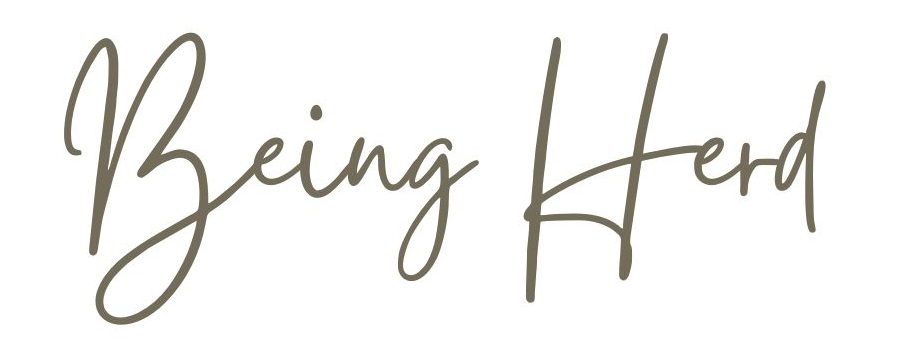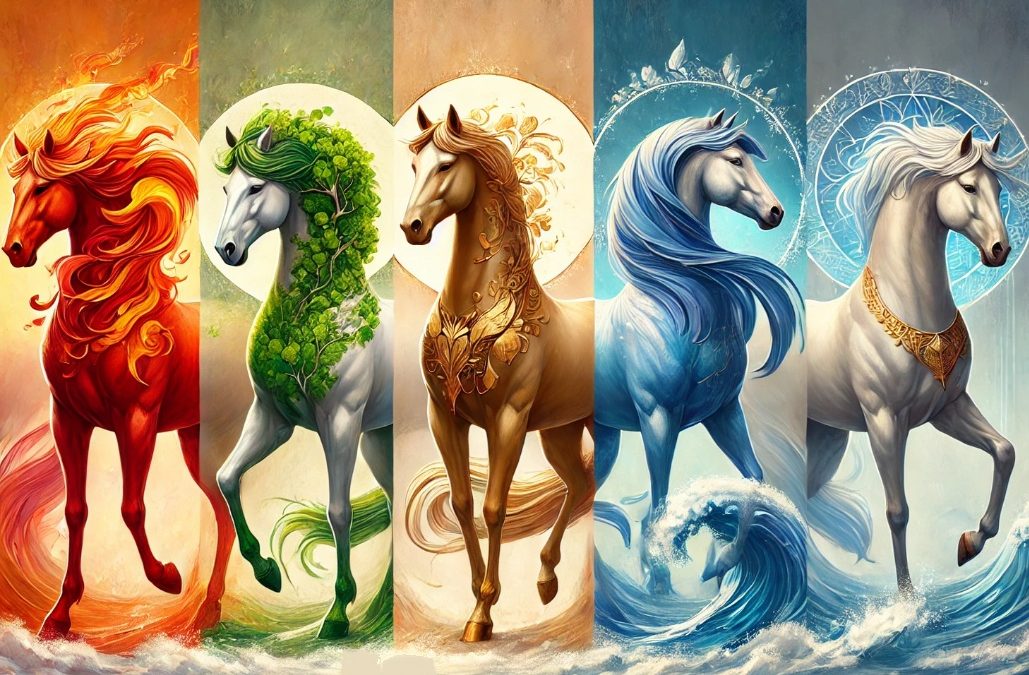Have you ever wondered: Why is my horse like this – and other horses aren’t?
Maybe your horse is constantly on edge – while your friend’s horse seems calm no matter what.
Or maybe your horse gets really slow when things get a bit more difficult – while others just seem to “go with the flow”, no matter what’s thrown at them.
Or your horse needs to understand why before they’ll do anything – while some horses just… do.
And you start thinking: What am I doing wrong?
But here’s what I’ve learned: You’re probably not doing anything wrong.
Your horse isn’t broken. They’re not difficult. They’re not even “too sensitive” or “too stubborn.”
They’re just… themselves.
1. What If It’s Not What You’re Doing – But Who They Are
Most of us are taught to see these patterns as problems. Training issues. Things we need to fix.
But what if they’re not?
What if the reason your horse reacts the way they do – consistently, predictably, over and over – isn’t about what you’re doing wrong?
What if it’s simply their character?
Because here’s what I’ve learned from watching wild herds: every horse has a way of moving through the world. A rhythm. A pattern. And when we learn to see it – and work with it instead of against it – everything changes.
The Five Elements gave me that clarity.
The Five Elements – 🔥 Fire, 🌳 Wood, 🌍 Earth, 🪙 Metal, and 💧 Water – come from Traditional Chinese Medicine and have been used for thousands of years to understand energy patterns in both humans and animals.
But here’s what makes them useful: they’re not about labeling your horse. They’re about understanding what your horse actually needs.
Once you start seeing your horse through this lens, things that used to confuse you suddenly make perfect sense:
- Why one horse needs constant reassurance while another needs space
- Why your “stubborn” horse isn’t defiant – they just need a good reason
- Why your “easy” horse might actually be carrying more than you realize
So let’s meet the five types – and see which one sounds most like your horse.
2. The Five Types: Who They Are and What They Need
Your horse may not fit neatly into just one type. Many horses are blends. But most will have a dominant element that shapes how they interact with the world.
🔥 Fire: The Amplifier
Traits: Sparkly, curious, emotional, expressive.
In balance: Playful, connected, quick to respond.
Out of balance: Overreactive, anxious, or seeking constant reassurance.
Fire horses are the emotional amplifiers of the herd. They pick up on energy like a satellite dish – and then broadcast it back, often louder than before. If you’re calm, they’ll mirror it. If you’re tense but trying to hide it, they’ll explode.
What they need is emotional clarity and resonance. Fire horses aren’t trying to make things difficult – they’re just incredibly sensitive to what’s really going on.
🧭 Your role? Be their steady mirror. Let them feel safe to express emotion – but don’t get swept away in it. Grounding your own energy is one of the kindest things you can do for a Fire horse.
🌳 Wood: The Explorer
Traits: Bold, determined, curious, goal-oriented.
In balance: Motivated, focused, forward-moving.
Out of balance: Frustrated, resistant, shut down.
Wood horses are driven. They don’t like being told what to do – but they love having something to do. They move with purpose and are happiest when they get to explore, figure things out, or work toward a goal.
What they need is freedom, direction, and respect. They’re not defiant. They just want their autonomy to be honored.
🧭 Your role? Be their guide – not their controller. Give them meaningful tasks, offer choices when possible, and always lead with clarity and purpose.

🌍 Earth: The Grounder
Traits: Calm, nurturing, loyal, relational.
In balance: Steady, supportive, emotionally tuned-in.
Out of balance: Stubborn, clingy, emotionally overloaded.
Earth horses are the emotional heart of the herd. They want connection, harmony, and predictability. They often seem “easy” – but they can carry more than we realize, especially if they’re trying to hold things together for others.
What they need is consistency, belonging, and emotional safety. They need to know where they fit in – and that their steadiness isn’t being taken for granted.
🧭 Your role? Be their safe person. Offer slow bonding moments, quiet walks, or simple routines. And most of all – notice them, even when they’re not “asking” for attention.
🪙 Metal: The Dignified One
Traits: Composed, precise, independent, self-contained.
In balance: Clear, focused, quietly confident.
Out of balance: Withdrawn, rigid, emotionally shut down.
Metal horses don’t chase connection – but they notice everything. They’re like the quiet leader in the corner who doesn’t say much, but when they do, everyone listens. They value order, clarity, and integrity.
What they need is respect and clean communication. They don’t respond to pressure. But they do respond to truth. Metal horses will follow you – but only if you embody the calm, consistent presence they respect.
🧭 Your role? Lead by example. Be honest in your energy, clear in your intent, and never push. If a Metal horse withdraws, it’s not defiance – it’s a sign something in the interaction lost its integrity.

💧 Water: The Watcher
Traits: Sensitive, intuitive, cautious, deeply aware.
In balance: Quiet, observant, emotionally connected.
Out of balance: Fearful, frozen, overly accommodating.
Water horses are the empaths. They often hang back, watching from the edges, taking in the emotional undercurrents before they act. They’re not slow – they’re sensing. And when the world feels too loud, they retreat.
What they need is safety, stillness, and time. Water horses bond deeply – but only when they feel truly safe.
🧭 Your role? Be their calm anchor. Move slowly, speak less, and listen more. Your presence – not your actions – will build trust.
3. Mixed Types, Life Phases, and Seasonal Shifts
By now, you might be thinking: “Wait… my horse sounds like two of those types!” Or: “But my horse used to be more curious—and now she just wants to stand quietly.” That’s completely normal. In fact, it’s expected.
Let’s look at why.
Most Horses Are a Mix
Just like people, horses are rarely just one thing. While one element type usually stands out as dominant, most horses have a blend of traits. Maybe your horse has the emotional expressiveness of Fire, but the sensitivity and caution of Water. Or the confident movement of Wood, but the relational steadiness of Earth.
The goal isn’t to pick the one right type. It’s to notice which energy feels most central – and which might be a response to life experience.
Age Changes Expression
A young Earth-type foal might act like a Fire type for a while – bouncy, curious, full of energy. That doesn’t mean they’ve changed. It just means their stage of life is more active, and that energy may soften over time.
The same goes for older horses. A formerly expressive Fire gelding might mellow into a more Metal-like demeanor with age. Hormonal shifts after gelding or during a mare’s cycle can influence how energy is shown – but the core character often remains.
So always ask yourself: Is this who they are? Or just the phase they’re in right now?
Gender Plays a Subtle Role
Stallions tend to show more direct, Yang energy – so their character type often feels louder, more defined. Mares, on the other hand, might hold their strength in quieter ways. Their presence can be just as powerful, but often shows up in relational or emotional intelligence rather than in outward movement.
And geldings? Sometimes, their energy becomes a little more mixed. The absence of strong hormones can soften sharp traits or make some types harder to identify clearly. But their needs are still there – sometimes even more visible once the pressure to perform fades.
Seasons Shape Energy
Even the time of year affects how your horse shows up. Fire horses may feel extra fizzy in the summer. Water types might seem more withdrawn in winter. Earth horses often shine during seasonal transitions, while Wood types thrive in spring.
These shifts don’t change your horse’s core type—but they do shape how it’s expressed. So if your usually calm Earth-type seems fidgety in spring, or your Water mare becomes clingy during autumn storms – that’s not inconsistency. It’s nature.
So What Should You Look For?
Instead of trying to pin down one label, try asking:
- What feels most consistent across time and situations?
- What part of your horse seems to guide the rest?
- What energizes your horse – and what drains them?
- What do they do when no one is asking anything of them?
That’s where the real answers are. And often, it’s in the quiet moments, not the big behaviors, where character reveals itself.
4. This Is a Lens, Not a Label
The Five Element types are not boxes to trap your horse in – they’re windows. This framework helps you see more clearly: needs, strengths, blind spots, and stress signals. But your horse is still an individual, not a checklist. So use this as a guide – not a rulebook. The goal isn’t to name and move on – it’s to stay curious. Because the more we understand what’s underneath the behavior, the more gently and honestly we can show up in return.
5. What Have You Noticed? 💛
What part of your horse came to mind while reading? Did a certain trait feel familiar – or did something surprise you?
Maybe what you’ve been calling a problem… is actually just who they are.
And here’s the relief in that: You’re not doing it wrong. Your horse isn’t broken. You can stop comparing them to other horses – and start seeing them for who they’ve always been.
Maybe your horse is just… Fire. Or Earth. Or Water.
And maybe, just maybe – your horse has been waiting for you to see that all along.
If you want to go deeper into understanding your horse’s character, you can download my free guide Into the Herd – How to Be Invited Into Your Horse’s Herd, Naturally.
Or join me inside Being Herd – my ongoing library of videos, guides, and deep dives where we explore communication, character, and connection in a way that makes sense to your horse.


Recent Comments